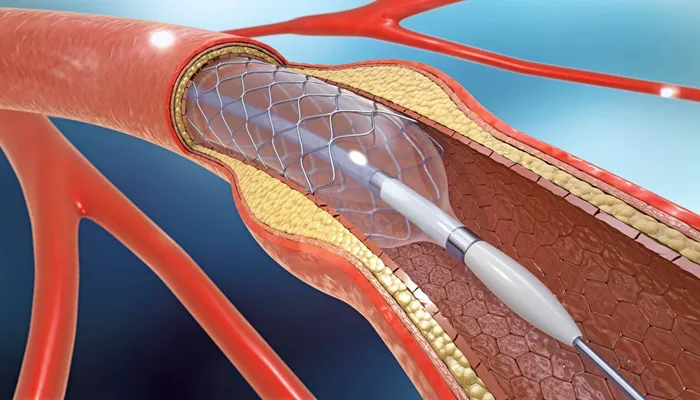Angioplasty is a common medical procedure used to open narrowed or blocked blood vessels that supply blood to the heart.
This procedure can significantly improve the quality of life for patients with coronary artery disease (CAD). However, many patients and their families often wonder about the long-term outcomes following angioplasty, particularly regarding survival rates and life expectancy. This article provides an overview of how long a person can live after angioplasty, highlighting various factors that influence survival and offering insights into post-procedure care.
Understanding Angioplasty
Angioplasty involves inserting a small balloon into the narrowed section of an artery. Once in place, the balloon is inflated to widen the artery, allowing for improved blood flow. In many cases, a stent (a small mesh tube) is placed in the artery to keep it open. This procedure is typically performed on patients suffering from CAD, which can lead to heart attacks if left untreated.
The Importance of Angioplasty
The primary goal of angioplasty is to relieve symptoms of CAD, such as chest pain (angina) and shortness of breath. By restoring adequate blood flow to the heart muscle, angioplasty can help reduce the risk of heart attacks and improve overall heart function. Studies have shown that angioplasty can lead to significant improvements in quality of life and functional capacity for many patients.
SEE ALSO: What Artificial Sweeteners Are Linked to Heart Disease?
Factors Influencing Survival After Angioplasty
Several factors play a crucial role in determining how long a person can live after undergoing angioplasty:
Age: Older patients generally have a higher risk of complications and may experience shorter survival times compared to younger individuals.
Overall Health: Pre-existing conditions such as diabetes, hypertension, and obesity can negatively impact survival rates.
Patients with multiple comorbidities often face greater challenges in recovery.
Severity of Heart Disease: The extent of coronary artery disease at the time of angioplasty influences outcomes. Patients with more severe blockages may have poorer prognoses.
Lifestyle Factors: Smoking, diet, physical activity levels, and adherence to prescribed medications significantly affect long-term survival after angioplasty.
Post-Procedure Care: Following angioplasty, patients are usually prescribed medications such as antiplatelet agents (e.g., aspirin or clopidogrel) to prevent blood clots. Regular follow-up appointments and lifestyle modifications are essential for improving outcomes.
Survival Rates After Angioplasty
Research indicates that many patients experience favorable outcomes following angioplasty. Here are some key statistics regarding survival rates:
Immediate Outcomes: Most patients see immediate relief from angina symptoms post-procedure. The success rate for angioplasty is generally high, with over 90% of procedures resulting in improved blood flow.
1-Year Survival Rate: Approximately 95% of patients survive at least one year after undergoing elective angioplasty for stable coronary artery disease.
5-Year Survival Rate: Studies suggest that around 80-90% of patients who undergo angioplasty for stable angina survive five years post-procedure.
Long-Term Survival: For patients with acute coronary syndromes (e.g., heart attacks), the long-term survival rate can vary significantly based on individual health factors but generally remains favorable compared to those who do not receive treatment.
Specific Survival Times
While individual outcomes can vary widely, here are some general estimates based on various studies:
Patients with Stable Angina: Those undergoing elective angioplasty typically have a life expectancy similar to that of the general population if they maintain healthy lifestyles and adhere to medical advice.
Patients with Acute Coronary Syndromes: These individuals may face more significant risks; however, timely intervention through angioplasty can substantially improve their prognosis. Studies show that many such patients live beyond five years post-procedure.
Improving Long-Term Outcomes
To maximize longevity after angioplasty, patients should focus on several key areas:
Lifestyle Modifications:
Diet: Adopting a heart-healthy diet rich in fruits, vegetables, whole grains, lean proteins, and healthy fats can help manage weight and cholesterol levels.
Exercise: Regular physical activity strengthens the heart and improves overall cardiovascular health.
Smoking Cessation: Quitting smoking is one of the most effective ways to enhance long-term survival after heart procedures.
Medication Adherence:
Patients must adhere strictly to prescribed medications to prevent complications such as blood clots or restenosis (re-narrowing of the artery).
Regular Follow-Up Care:
Routine check-ups with healthcare providers help monitor heart health and manage any emerging issues promptly.
Managing Comorbidities:
Effectively managing conditions like diabetes and hypertension is crucial for improving overall prognosis.
Conclusion
Angioplasty offers significant benefits for individuals suffering from coronary artery disease by alleviating symptoms and reducing the risk of heart attacks. While many patients enjoy favorable survival rates following this procedure—often living well beyond five years—individual outcomes depend on various factors including age, overall health, lifestyle choices, and adherence to medical advice.
By making informed lifestyle changes and maintaining regular follow-up care, patients can enhance their quality of life and longevity after undergoing angioplasty. It is essential for individuals considering or recovering from this procedure to engage actively with their healthcare team to optimize their health outcomes effectively.
Related topics:
- How Long Can You Live with Left Ventricular Hypertrophy?
- How Long Can You Live with A Leaky Aortic Valve?
- Which Artery Is The Most Common to Have Blockage?

